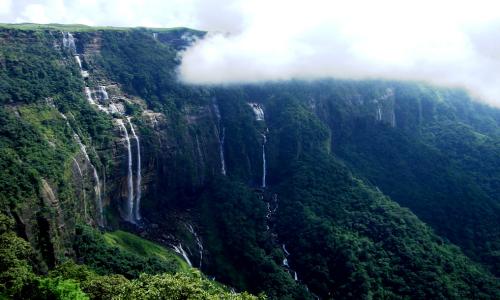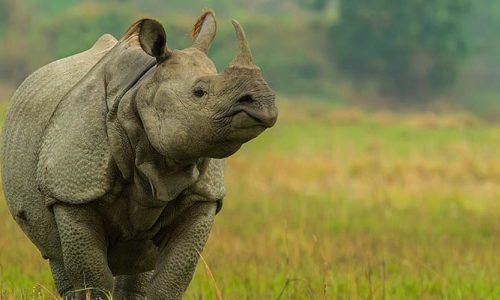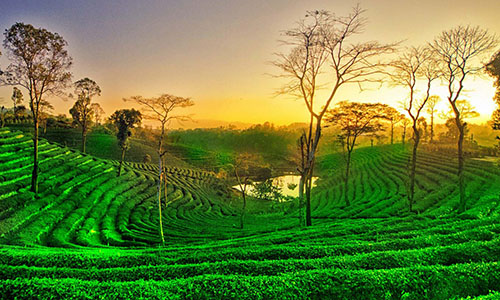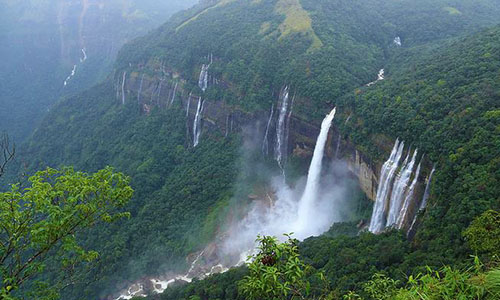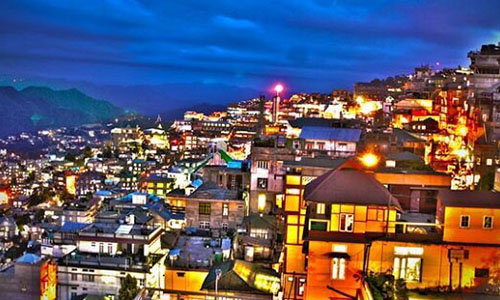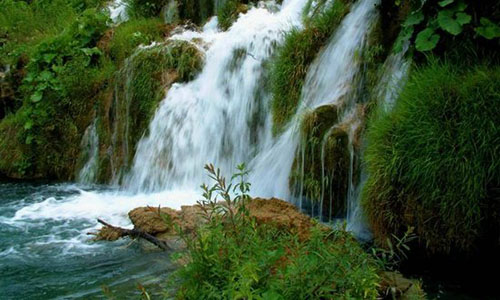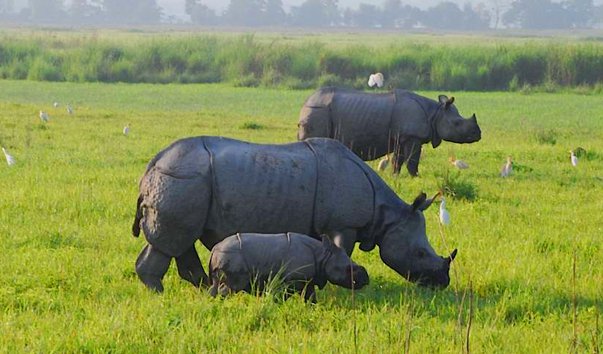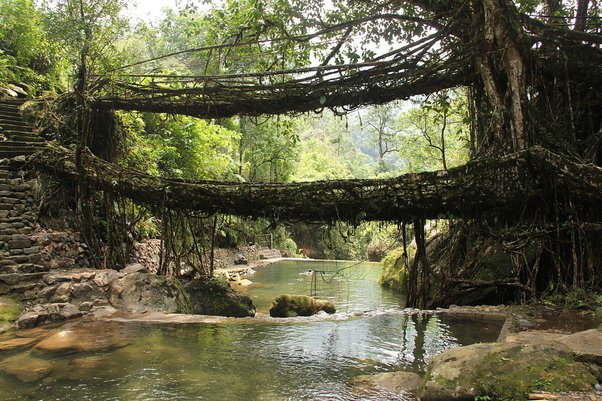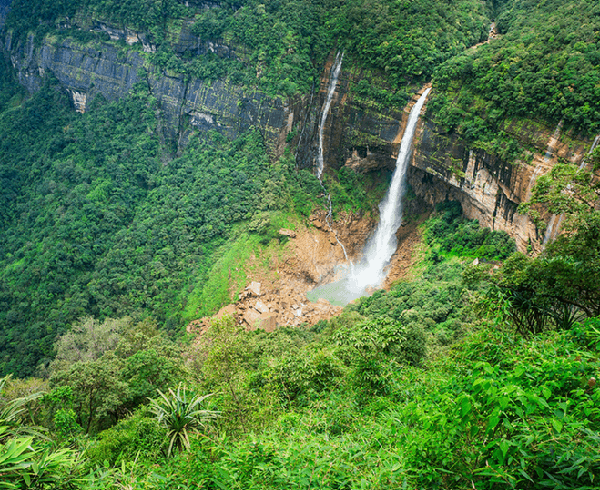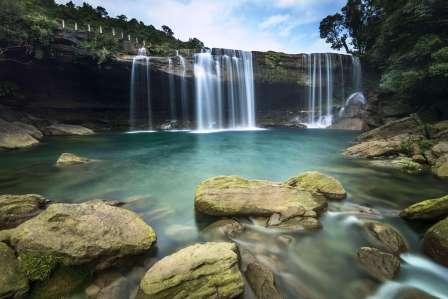Meghalaya
“The Abode of Clouds”
Meghalaya Tourism-A Glimpse
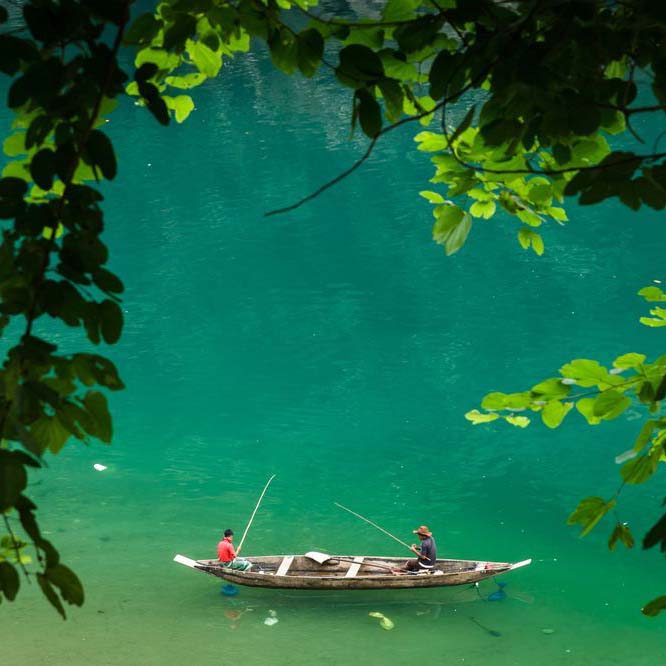 Meghalaya, the abode of clouds, is one of the most beautiful states in the North-East India offering a variety of sights, activities, food and festivals to the tourists. Well known for Cherapunjji, the place which receives one of the maximum rainfall in the world, Meghalaya can mesmerize you with its hills, valleys, lakes, caves and waterfalls which give it a beautiful look when covered with beautiful clouds.
Meghalaya, the abode of clouds, is one of the most beautiful states in the North-East India offering a variety of sights, activities, food and festivals to the tourists. Well known for Cherapunjji, the place which receives one of the maximum rainfall in the world, Meghalaya can mesmerize you with its hills, valleys, lakes, caves and waterfalls which give it a beautiful look when covered with beautiful clouds.
The land of simple yet so colourful and entertaining people, Meghalaya is inhabited by three tribes Garo, Khasi and Jayantia which add to the richness of the state as all of the three tribes have their languages, religion, festivals, costumes, cuisines and dances! This is something most appealing which makes the state a colourful and pleasant land while it always boasts of its scenic splendour being located in the lap of nature.
Beautiful hills, lush green mountains, vast wildlife and magnificent waterfalls can only describe the state to a limited extent. The complete description of the state can only be felt deep within as you breathe in the fresh air of Meghalaya. Travel all day long to the hills and mountains beholding beautiful Meghalaya sites while eating the sumptuous food and enjoying the marvelous local handicrafts.
Local Food and Cuisine of Meghalaya
Meghalya’s cuisine is liberal, surprising and tinted with influences of the tribal cultures and styles of the area. The food is simple and mild but an almost staple dash of spice and unique ingredients makes the platter here standout. Rice with spicy meat and fish preparations is the staple food of people in Meghalaya.
Ferment rice beer usually accompanies religious rites and major ceremonies and celebrations. Dohshaiin, Tungtab, Red rice, Jadoh, Dohneiihong, Makham-Bitchi and Kappa are the delicacies that are almost constant in a traditional and authentic Meghalayan cuisine, so are the vegetarian options, Jhur Sideh, Daineiiong, and Muli Khleh.
What’s Great?
Having been cut off from mainland India for years due to ethnic differences, the natural beauty of Meghalaya and the rawness of local culture has remained intact from the shackles of excessive commercialization.
What’s not so Great?
The state is considered a sensitive zone for ethnic and political tension. While the tourism industry is starting to gain momentum in the northeast, travelers can face issues in communication and food choices because of the difference in lifestyle and eating habits.
For Whom?
Meghalaya has something to offer to everyone. While couples can plan a romantic getaway in the city, families can head to Meghalaya for a chilled-out break in nature’s lap.
People and Culture of Meghalaya
The people of this state are hardworking, cheerful and sociable and three tribes inhabit Meghalaya namely Garo (Tibetan who live in western Meghalaya), Khasi (live in central part) and Jayantia (live in eastern part of Meghalaya). The unique thing about their society is that they follow matrilineal system which means that the inheritance goes to the women of the house and the men are married into women’s families as a result of which the children bear the surnames of their mothers.
Maximum people follow Christianity whereas Hinduism and Buddhism are also practised by the people. Music, drumbeats and dances are the most important part of the life of Meghalayan people as they are very passionate about their music, dance and culture. You will be spellbound by their art of weaving and carving.
Geography of Meghalaya
One amongst the seven sisters of the North East, Meghalaya translates into the land of clouds. True to its name, the state is known to receive heavy rainfalls. Spread across an area of 22,429 square kilometres, Meghalaya is bordered by Assam to the north and east, and Bangladesh towards the southern and eastern side. Regarding topography, Meghalaya is mostly plateau with steep slopes facing southwards. While the state has many lakes and waterfalls, 30% of its land is covered by forest.
History of Meghalaya
Little is known about the history of Meghalaya other than the Khasi kingdom which is known to take up a rift between the British government when it wanted to construct a rail line through this area to connect Bengal with Assam. A treaty was signed between the two parties only to be repudiated in 1829 by the local leader following the string of resistance by the public. However, later, the local rulers submitted to the British kingdom following the confrontation.
The tribals of Meghalaya continued living their lifestyle in seclusion until its leaders assented to join independent India. In the early years, Meghalaya was under the United Provinces of Assam for administrative efficiency and management, but as demands for statehood arose, Meghalaya was awarded full statehood on January 21st, 1972.
Music and Dance
The Garos of Meghalaya celebrate life in full spirits. The local folklore has special songs which are sung on auspicious occasions making use of instruments like pipes, drums, flutes and cymbals. The local dance forms include various dances like Lahoo Dance, Doregata and Pomelo Dance. The Doregata Dance is a teasing dance form in which women attempt to knock off their male counterparts’ turbans with their heads. If they succeed, it’s followed by celebrating the victory with cheer and laughter.
Local Festivals of Meghalaya
Meghalaya celebrates Wangala in the month of November every year. Often referred to as the dance of a hundred drums, the festival marks the end of the period of labour in the hope of yielding a good harvest. Men, women and children from all age groups dress up for the festival and rejoice by dancing on the beats of long cylindrical drums. Dedicated to Satyong, the local god of fertility, Wangala is celebrated across Meghalaya for a duration of one week.
Art and Craft of Meghalaya
The Garo and Khasi communities in Meghalaya are known for their weaving skills. Apart from weaving Dakmanda; the fabric of their costumes, they are famous for making Tlieng, a special kind of cane mat. This mat is said to survive the test of time for as long as 20-30 years. Other than this, handwoven cane basket and chairs are unique to take from here. The Khasi tribe is also known for extracting iron ore and manufacturing domestic tools as well as weapons used in warfare.
Other Trips
These are other trips.

